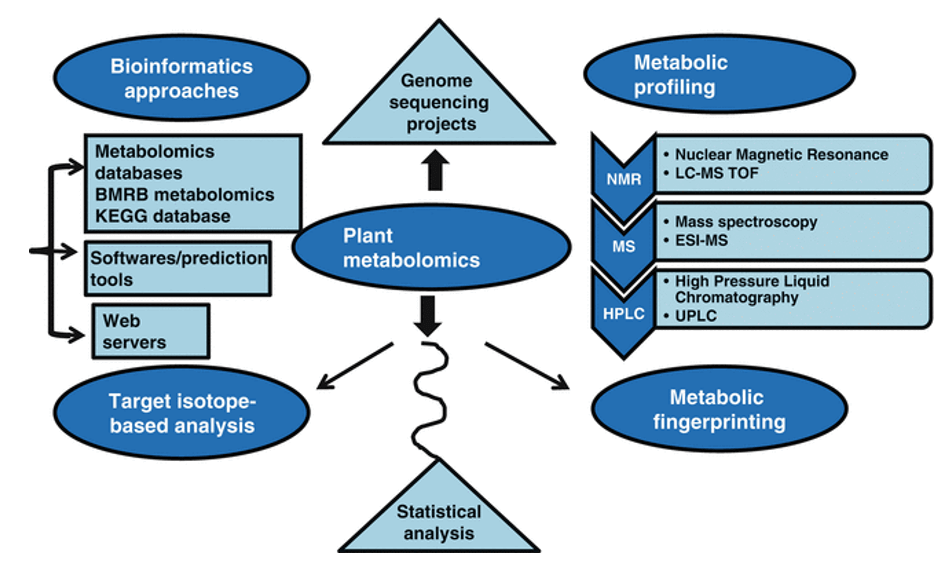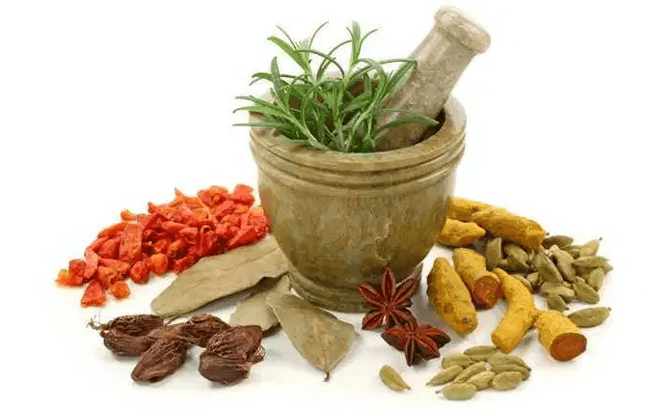Daidzein (7-hydroxy-3-(4-hydroxyphenyl)-4H-chromen-4-one) is a naturally existing compound found exclusively in soybeans and other legumes and structurally belongs to a class of compounds called isoflavones. The biosynthesis of daidzein starts with L-phenylalanine and undergoes a general phenylpropanoid pathway where the shikimate derived aromatic ring is shifted to the adjacent carbon of the heterocycle. The process begins with phenylalanine ligase cleaving the amino group from L-Phenylalanine forming the unsaturated carboxylic acid and cinnamic acid. Cinnamic acid is then hydroxylated by membrane protein cinnamate-4-hydroxylase to form p-coumaric acid, which then acts as the starter unit which gets loaded with coenzyme A by 4-coumaroyl: CoA-ligase. The starter unit (A) then undergoes three iterations of malonyl-CoA resulting in (B), which enzymes chalcone synthase (CHS) and chalcone reductase (CHR) modify to obtain trihydroxychalcone. CHR is NADPH dependent. Chalcone isomerase (CHI) then isomerizes trihydroxychalcone to liquiritigenin, the precursor to daidzein. Daidzein are used as signal carriers and defence responses to pathogenic attacks in vivo. In humans, recent research has shown the viability of using daidzein in medicine for menopausal relief, osteoporosis, blood cholesterol, and lowering the risk of some hormone-related cancers, and heart disease. Scientists at Creative Proteomics take advantage of highly quantitative methods with high-performance liquid chromatography (HPLC) for the determination of daidzein related metabolites levels in various samples. Furthermore, we provide reliable, rapid and daidzein analysis related service to speed up your research aims ranging from diseases diagnosis to gaining new insights in disease mechanism or treatment.
The Main Applications of Daidzein Analysis Service
- Identifying novel biomarkers of diseases
- Accelerating development of novel drugs
- Gaining new mechanism of diseases
Advantages of Our Daidzein Analysis Service
- Constantly optimized protocol and analytical software
- Professional experiment design
- Quick turnaround time
- High accuracy, specificity, and sensitivity.
Service Workflow
Creative Proteomics provides daidzein analysis service in a reliable and effective manner, based on our cutting-edge HPLC platforms. The experimental procedures contain four main procedures: sample collection, metabolites extraction, HPLC data analysis and bioinformatics analysis (Figure 1). Our service will be tailored to specific samples and needs for optimal results.
 Figure 1. The overall workflow of daidzein analysis
Figure 1. The overall workflow of daidzein analysis
List of Partial Detectable Daidzein Related Metabolites at Creative Proteomics
| L-phenylalanine | Trihydroxychalcone | P-coumaric acid |
| Cinnamic acid | Liquiritigenin | |
Sample Requirements
We can analyze a wide range of biological materials including but not limited to cells and solid tissues. If you need transport your samples to us, please follow the following requirements for different types of samples:
- Foliage: ≥1.0 g /sample
- Tissue: 200 mg/sample
- Cells: 1x107/sample
- Liquid: 500 µl/sample
Shipment condition: dry ice
Report Delivery
- Experimental protocols
- Instrumental factors of HPLC
- The raw data files of HPLC and the summary of HPLC data quality
- Bioinformatics analysis report
Based on advanced HPLC platforms for the determination of daidzein related metabolites, professional bioinformatic analysis software and experienced technicians and scientists, Creative Proteomics provides customer-tailored daidzein analysis service with rapid experimental procedures and easy to read report, to accelerate your scientific research.
References
- Dewick, Paul M. Medicinal Natural Products: A Biosynthetic Approach, 3rd Edition. Wiley Online Library: Wiley. 2009. February. 137–175.
- Jung Woosuk, Yu Oliver, Lau Sze-Mei Cindy. Identification and expression of isoflavone synthase, the key enzyme for biosynthesis of isoflavones in legumes. Nat Biotechnol. 2000.18:208-212.
For Research Use Only. Not for use in diagnostic procedures.


 Figure 1. The overall workflow of daidzein analysis
Figure 1. The overall workflow of daidzein analysis





